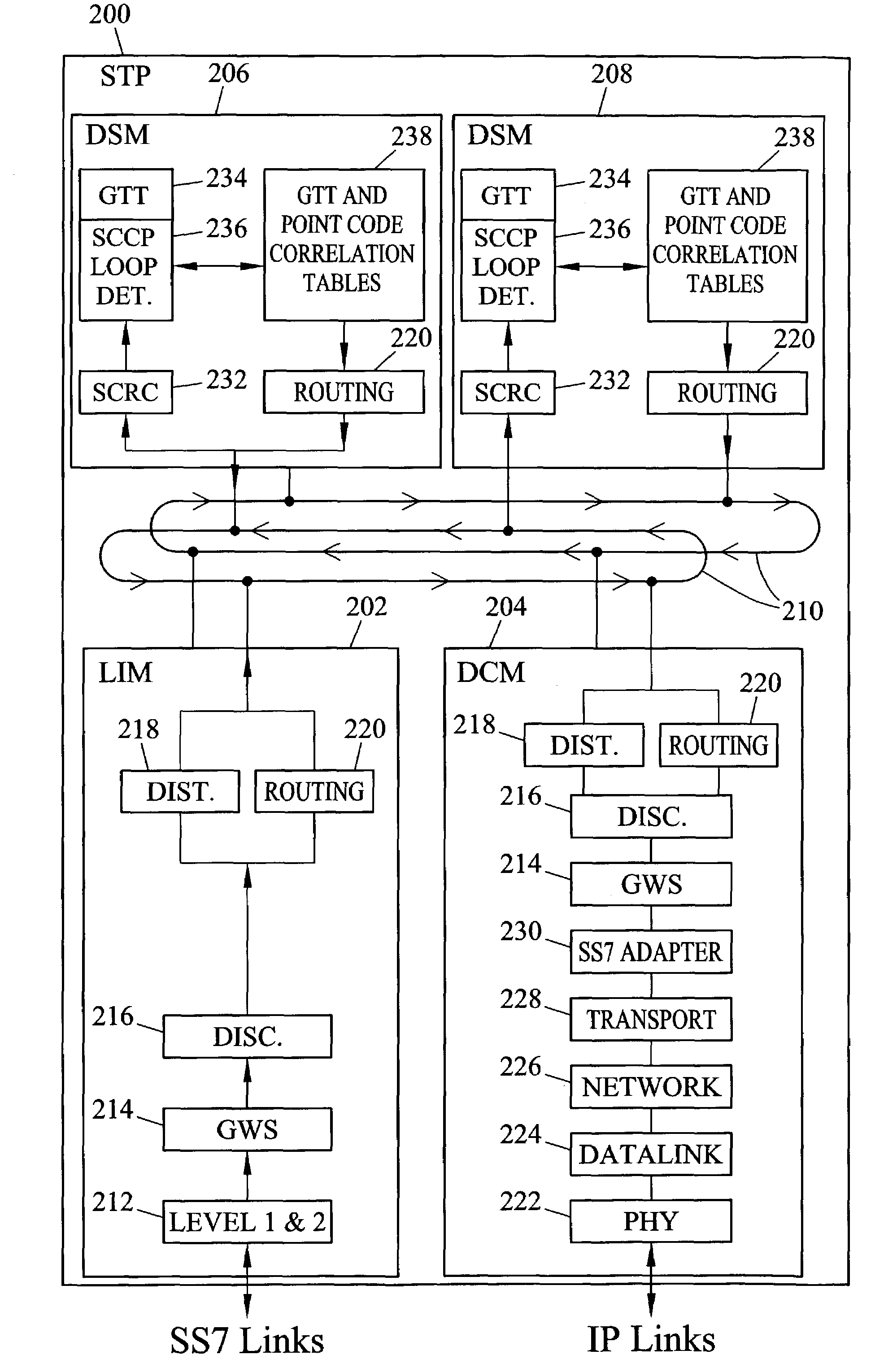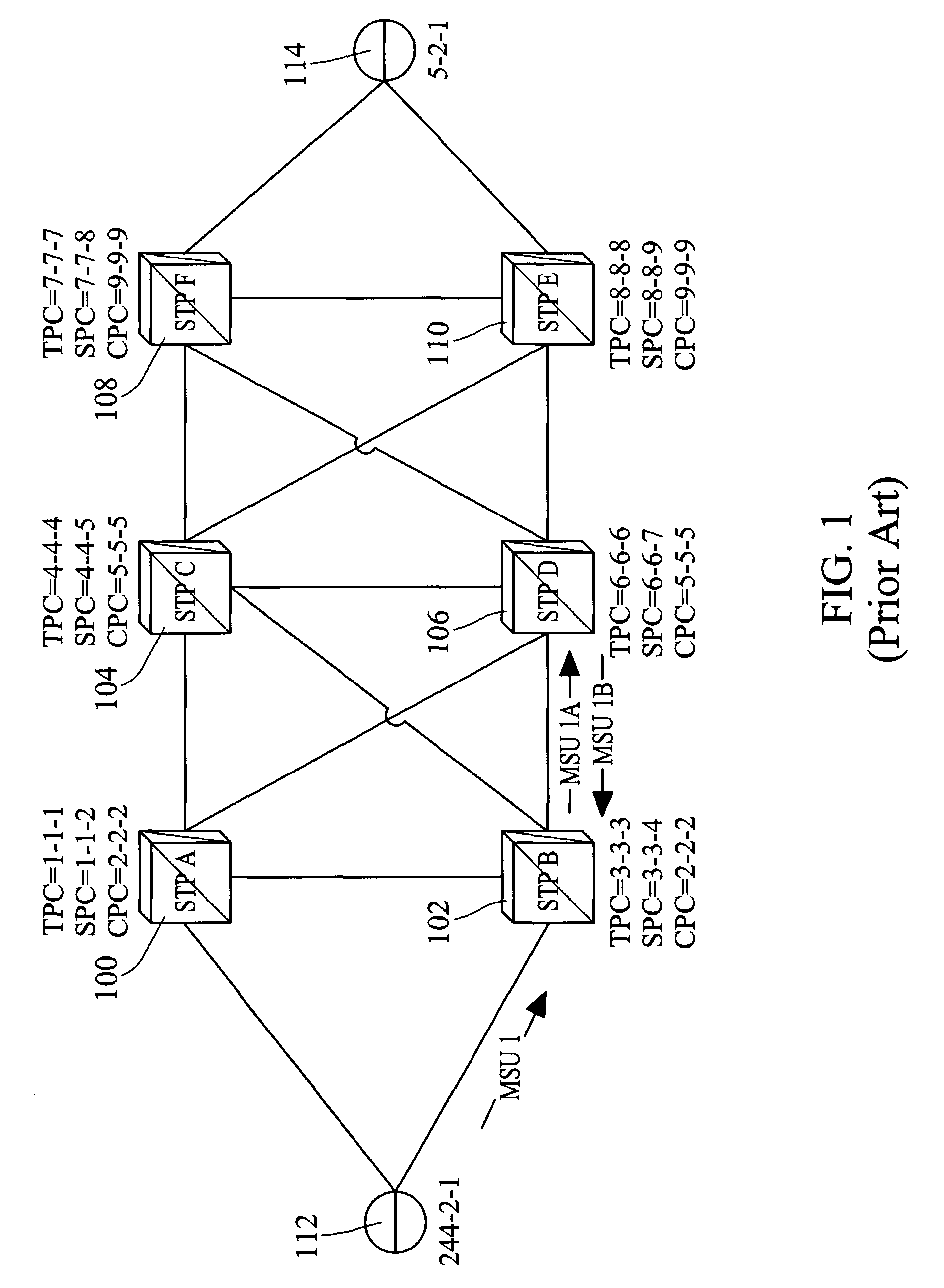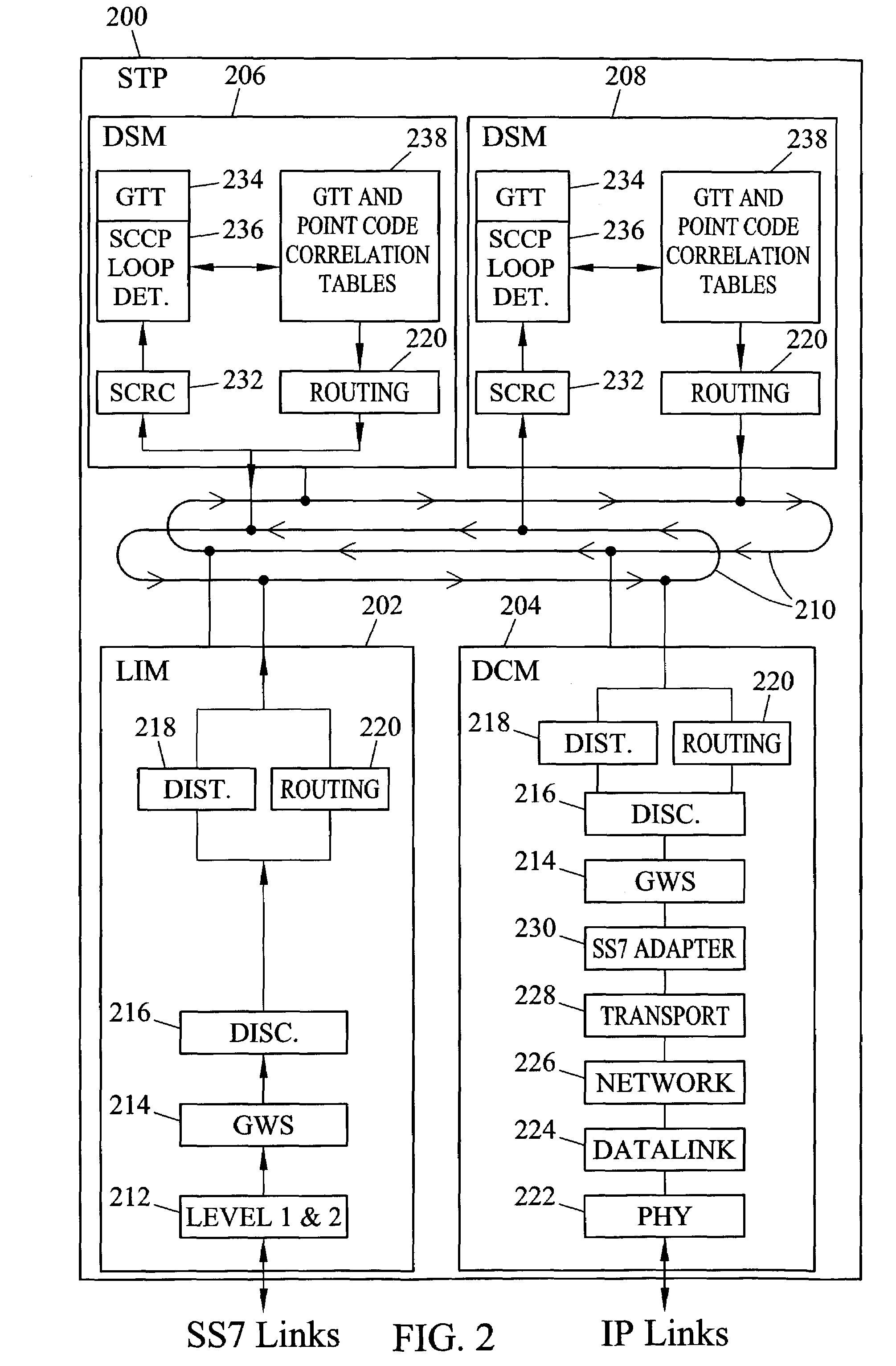Methods and systems for detecting and preventing signaling connection control part (SCCP) looping
a signaling connection and control part technology, applied in the direction of electrical equipment, interconnection arrangements, supervisory/monitoring/testing arrangements, etc., can solve the problems of consuming processing resources, unsatisfactory looping, and increasing network congestion
- Summary
- Abstract
- Description
- Claims
- Application Information
AI Technical Summary
Benefits of technology
Problems solved by technology
Method used
Image
Examples
Embodiment Construction
[0039]FIG. 1 is a network diagram illustrating conventional SCCP looping. Referring to FIG. 1, a plurality of STPs 100, 102, 104, 106, 108, and 110 are interconnected between an SSP 112 and an SSP 114. In the illustrated example, each STP includes a true point code (TPC), a secondary true point code (SCP), and a capability point code (CPC). True point codes and secondary true point codes are point codes that each STP uses to identify itself in the OPC fields of messages that it originates. A capability point code is a point code used by other nodes to send messages to a pair of STPs. The particular STP that processes a message addressed to its capability point code may depend on load sharing considerations.
[0040]In the illustrated example, SSP 112 originates a message, MSU 1, and sends the message to STP B 102. MSU 1 is assumed to have the following fields:
MTP OPC=244-2-1
MTP DPC=2-2-2
SCCP RI=route-on-gt
The message is assumed to be sent route on global title. When STP B 102 receives ...
PUM
 Login to View More
Login to View More Abstract
Description
Claims
Application Information
 Login to View More
Login to View More - R&D
- Intellectual Property
- Life Sciences
- Materials
- Tech Scout
- Unparalleled Data Quality
- Higher Quality Content
- 60% Fewer Hallucinations
Browse by: Latest US Patents, China's latest patents, Technical Efficacy Thesaurus, Application Domain, Technology Topic, Popular Technical Reports.
© 2025 PatSnap. All rights reserved.Legal|Privacy policy|Modern Slavery Act Transparency Statement|Sitemap|About US| Contact US: help@patsnap.com



